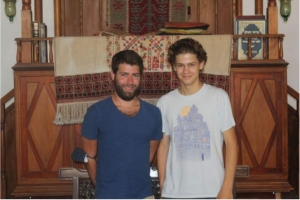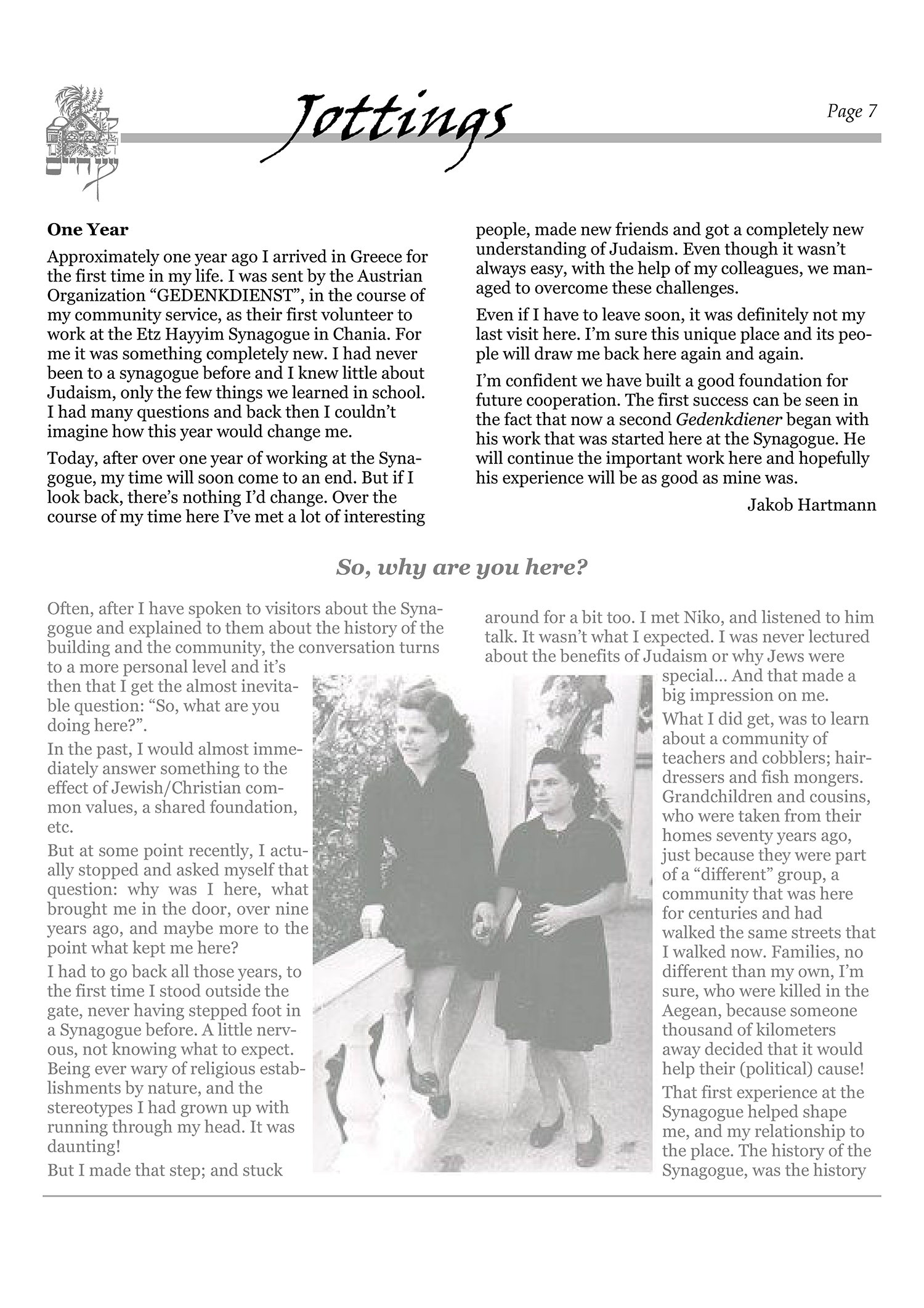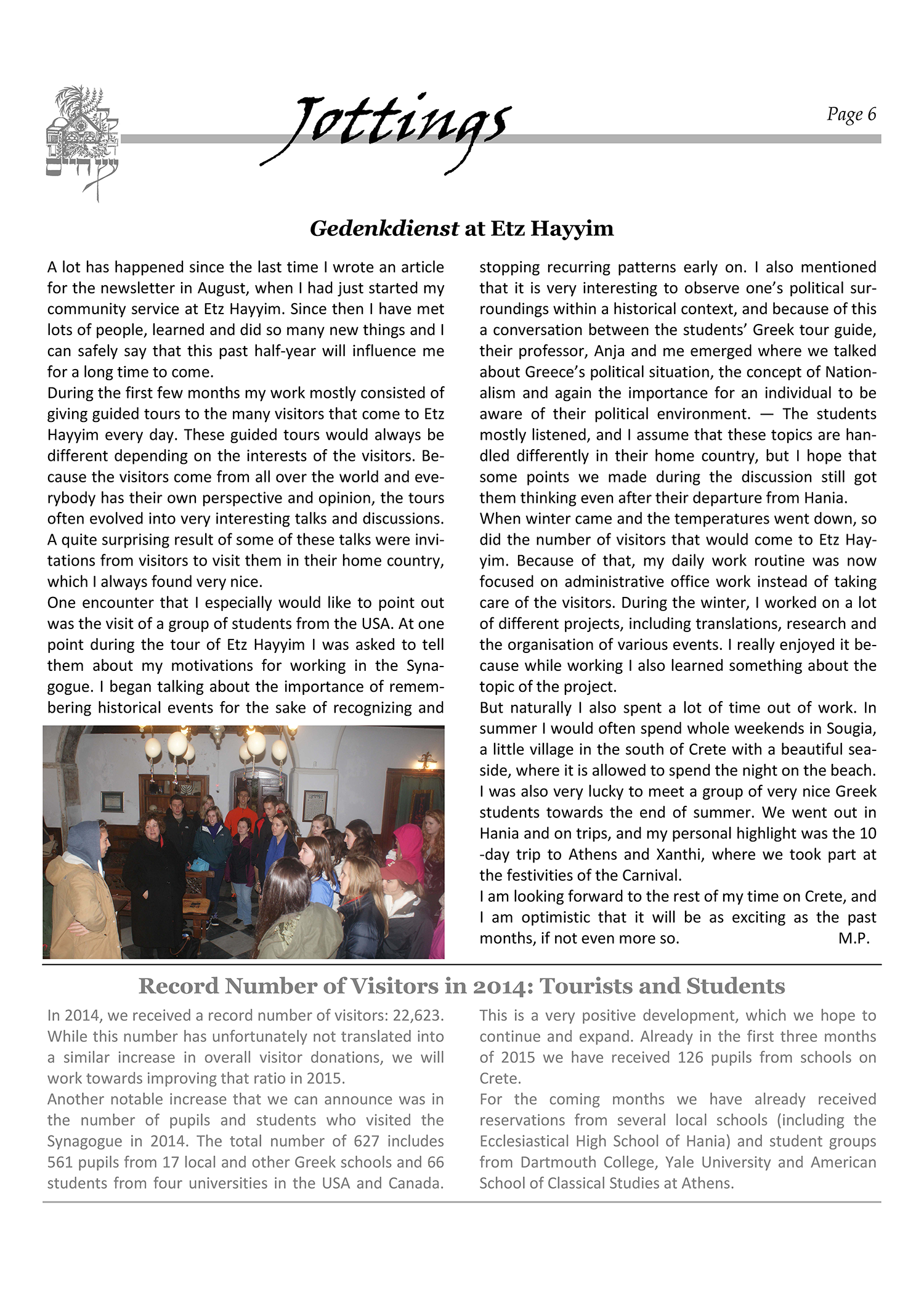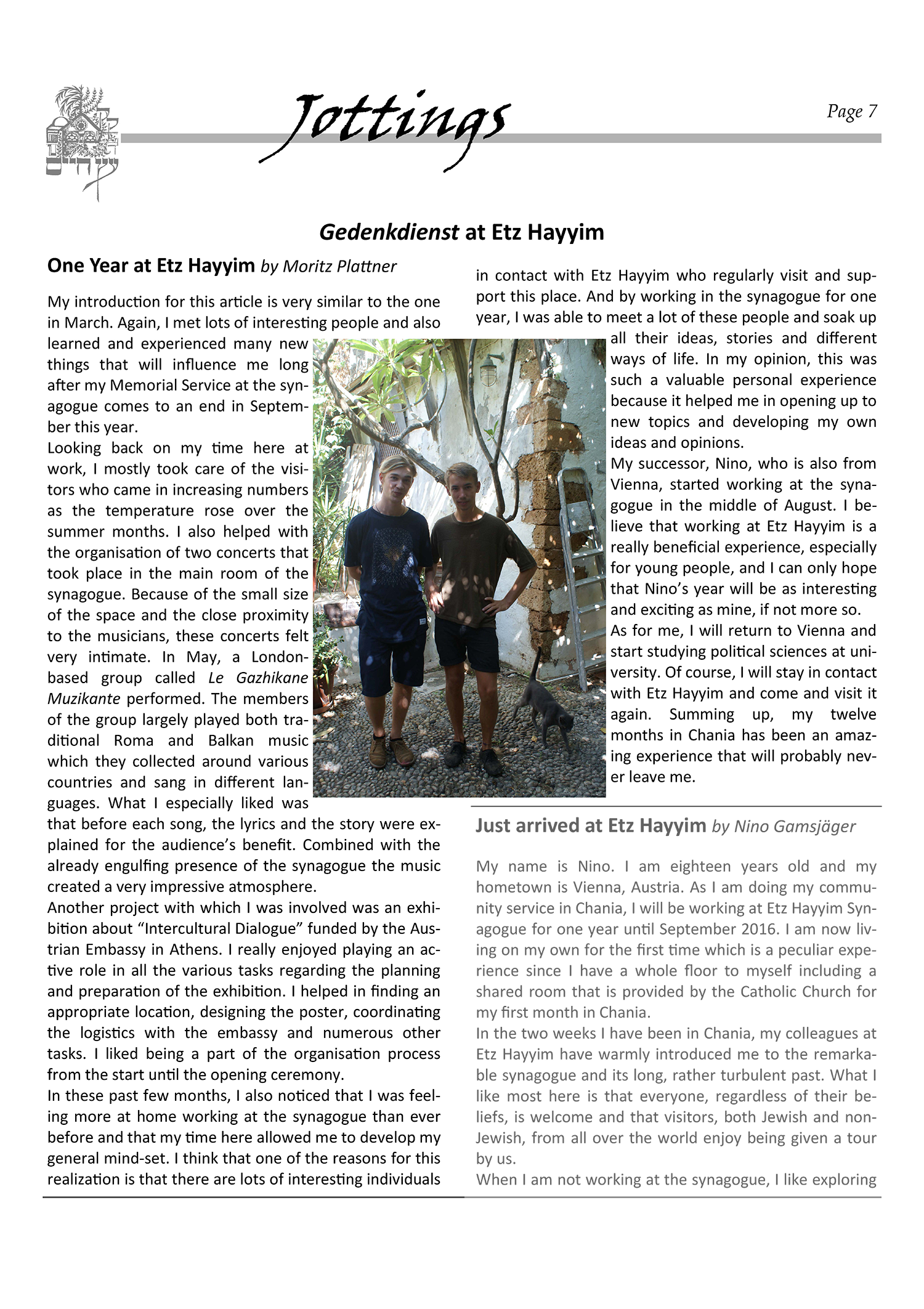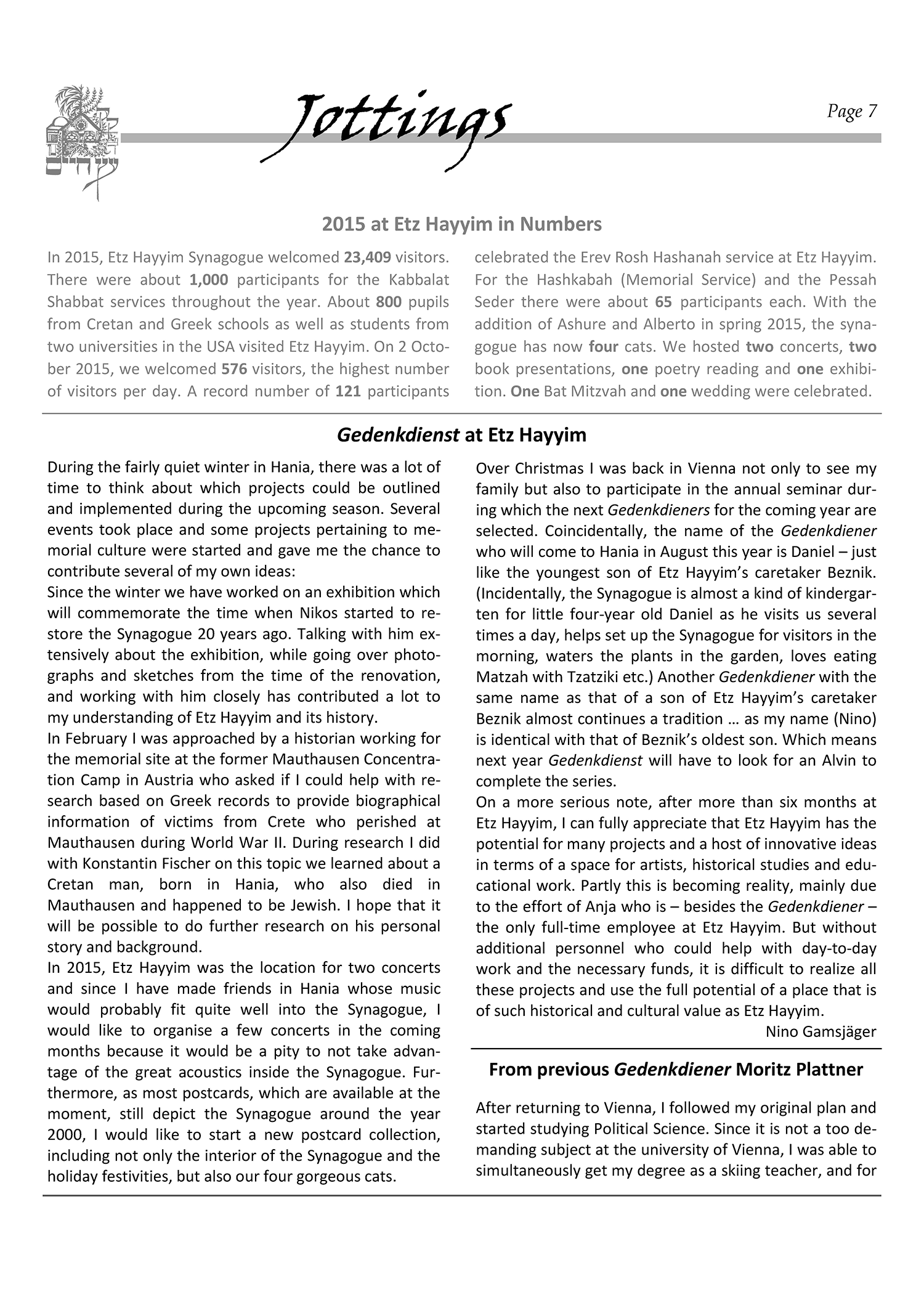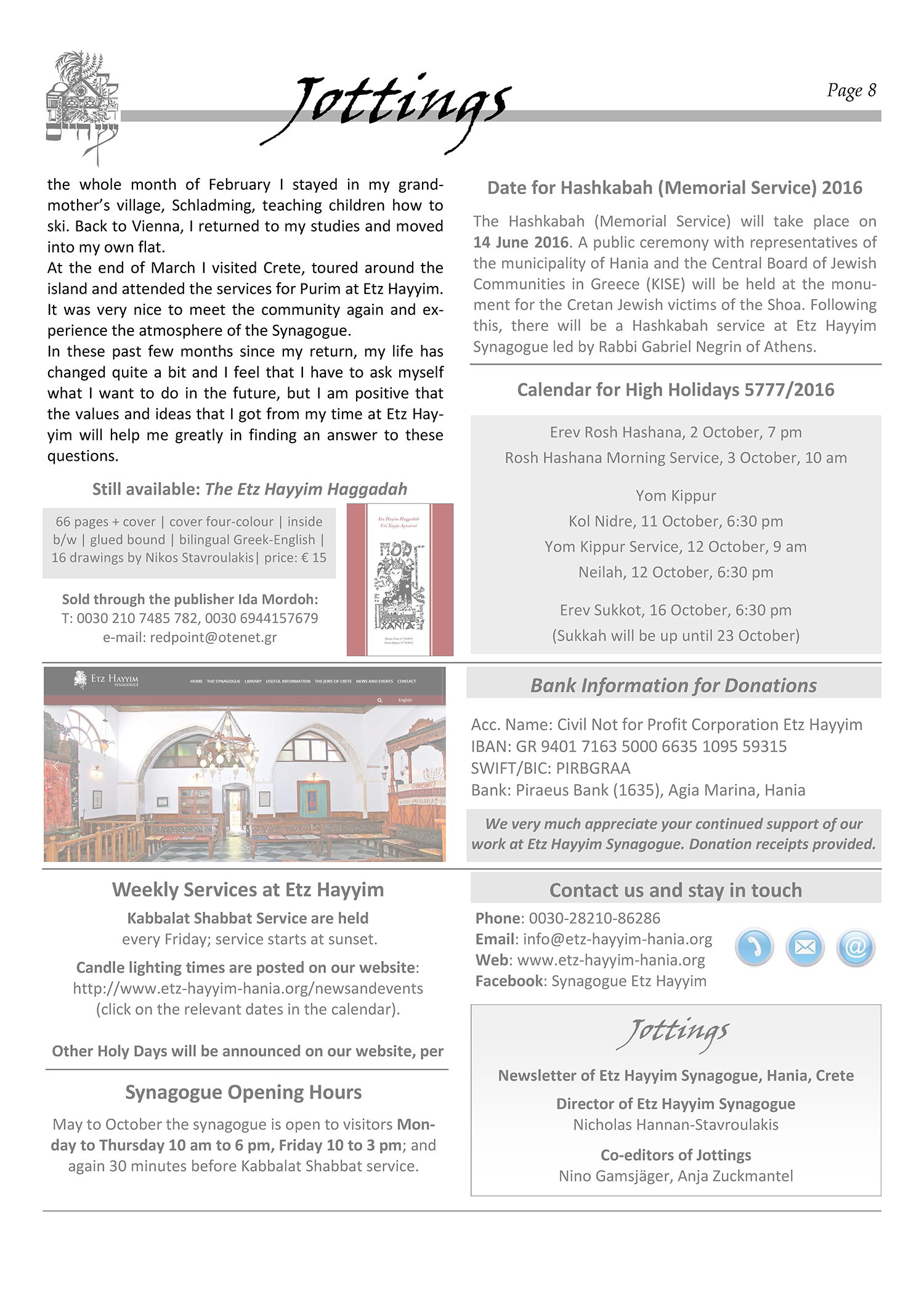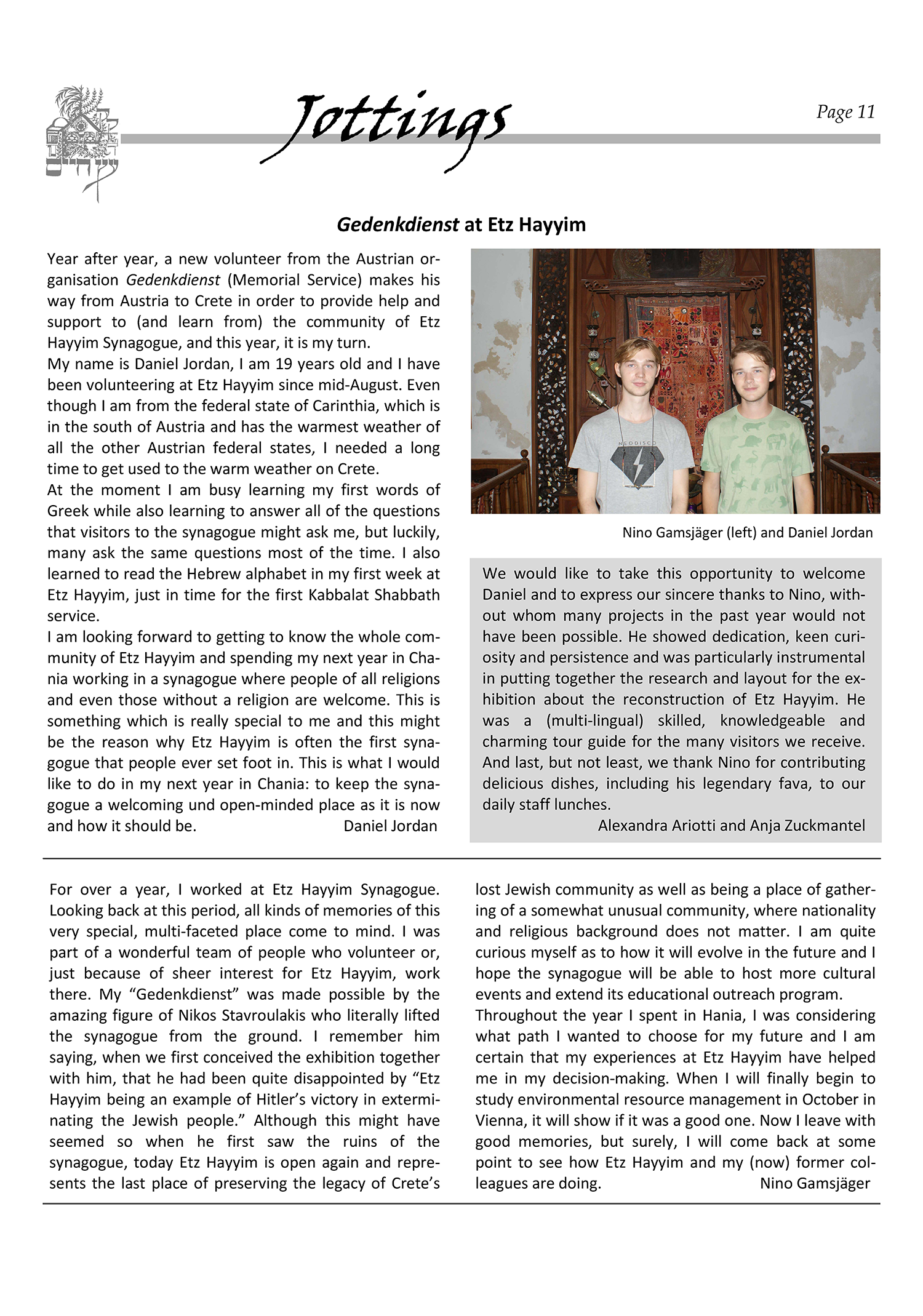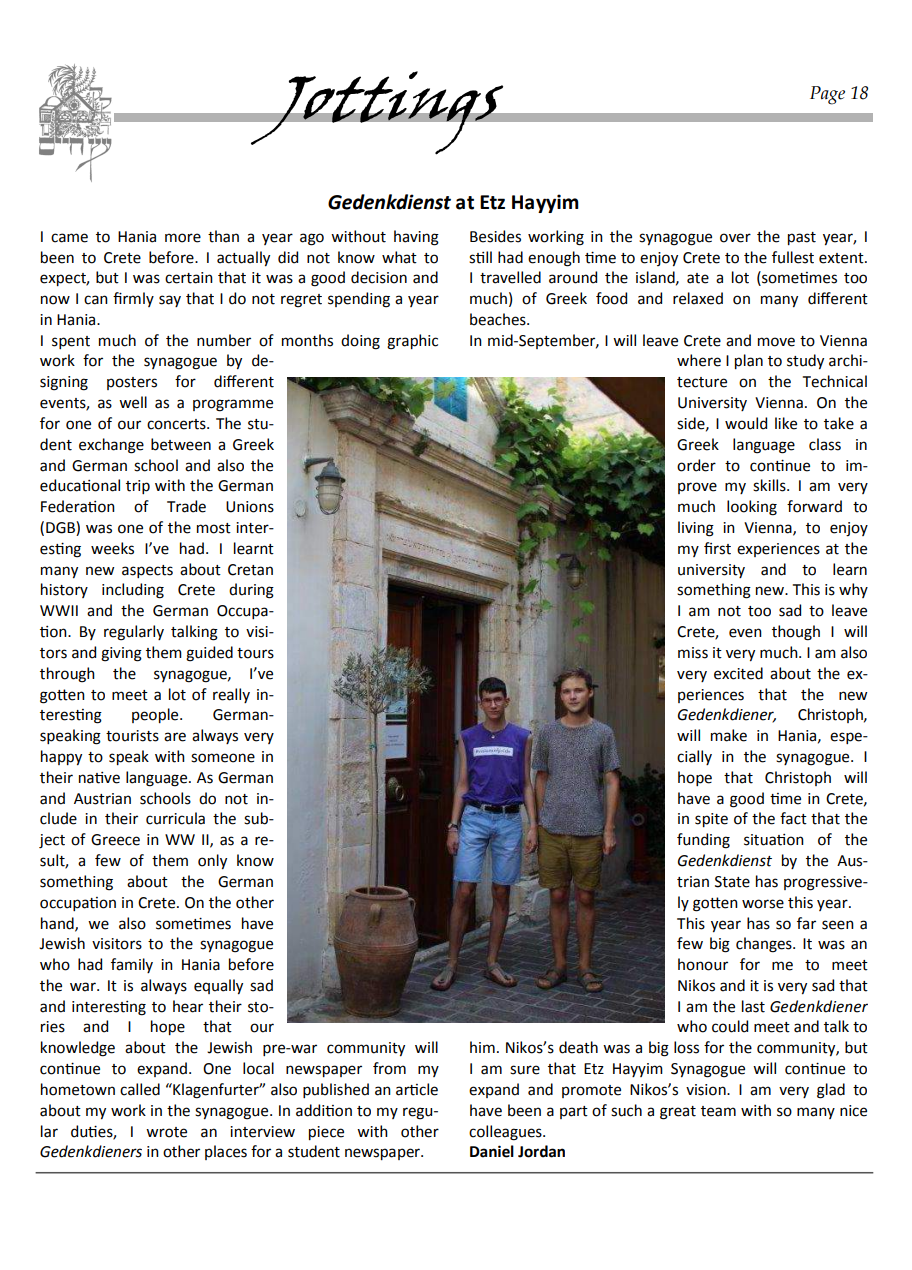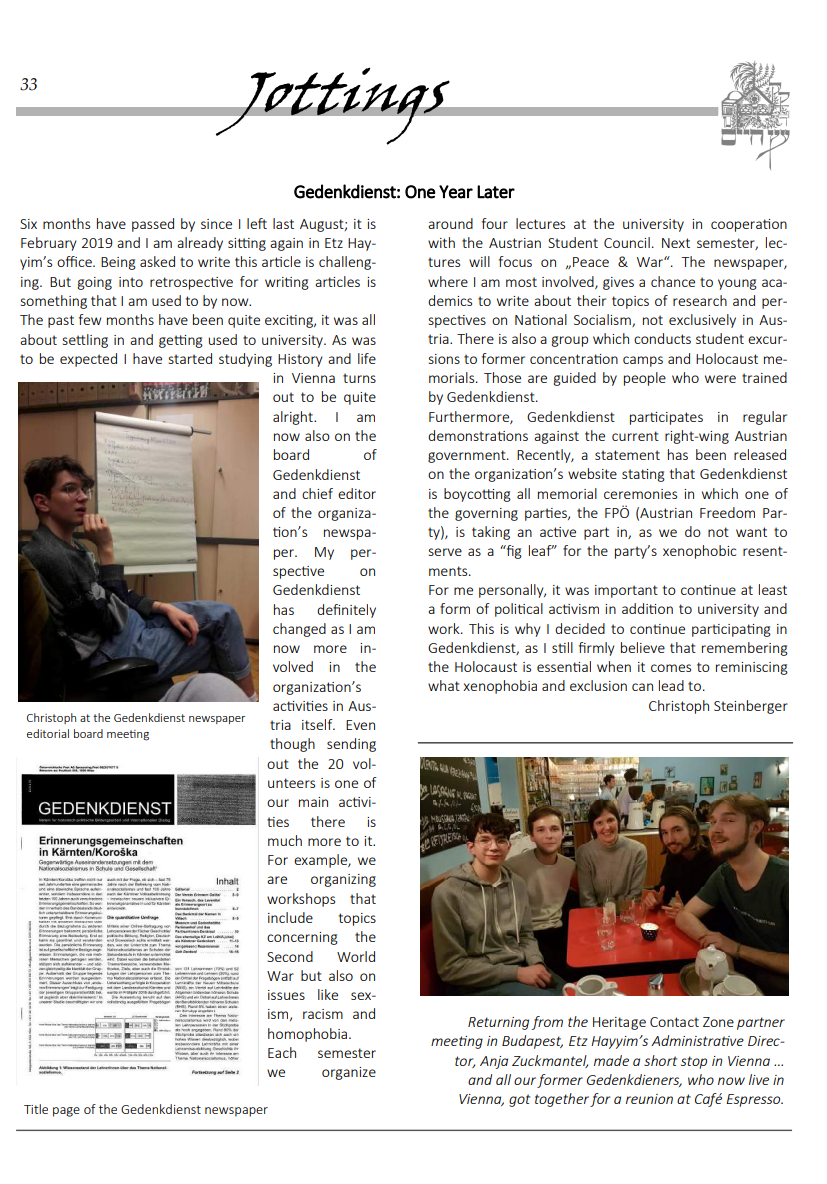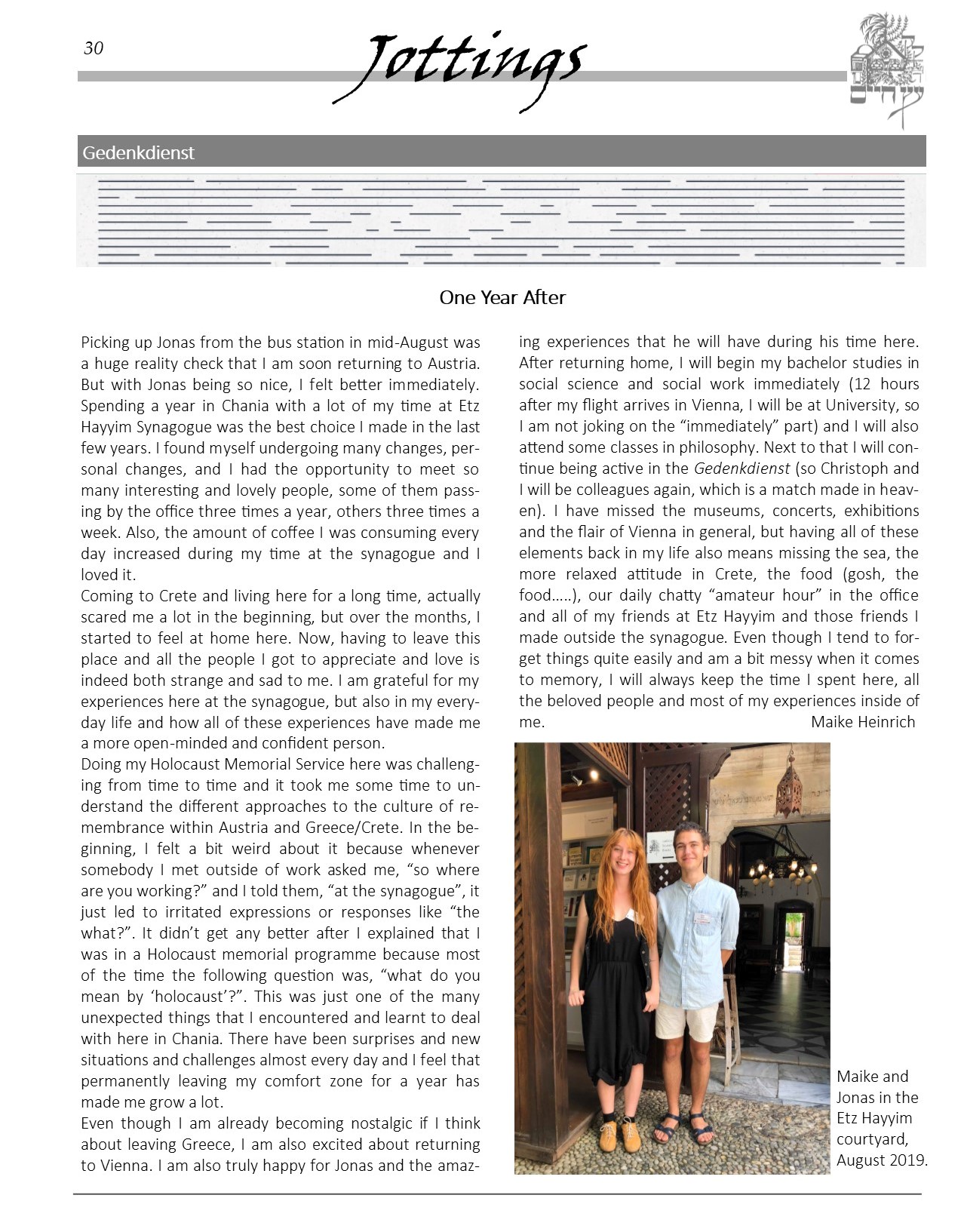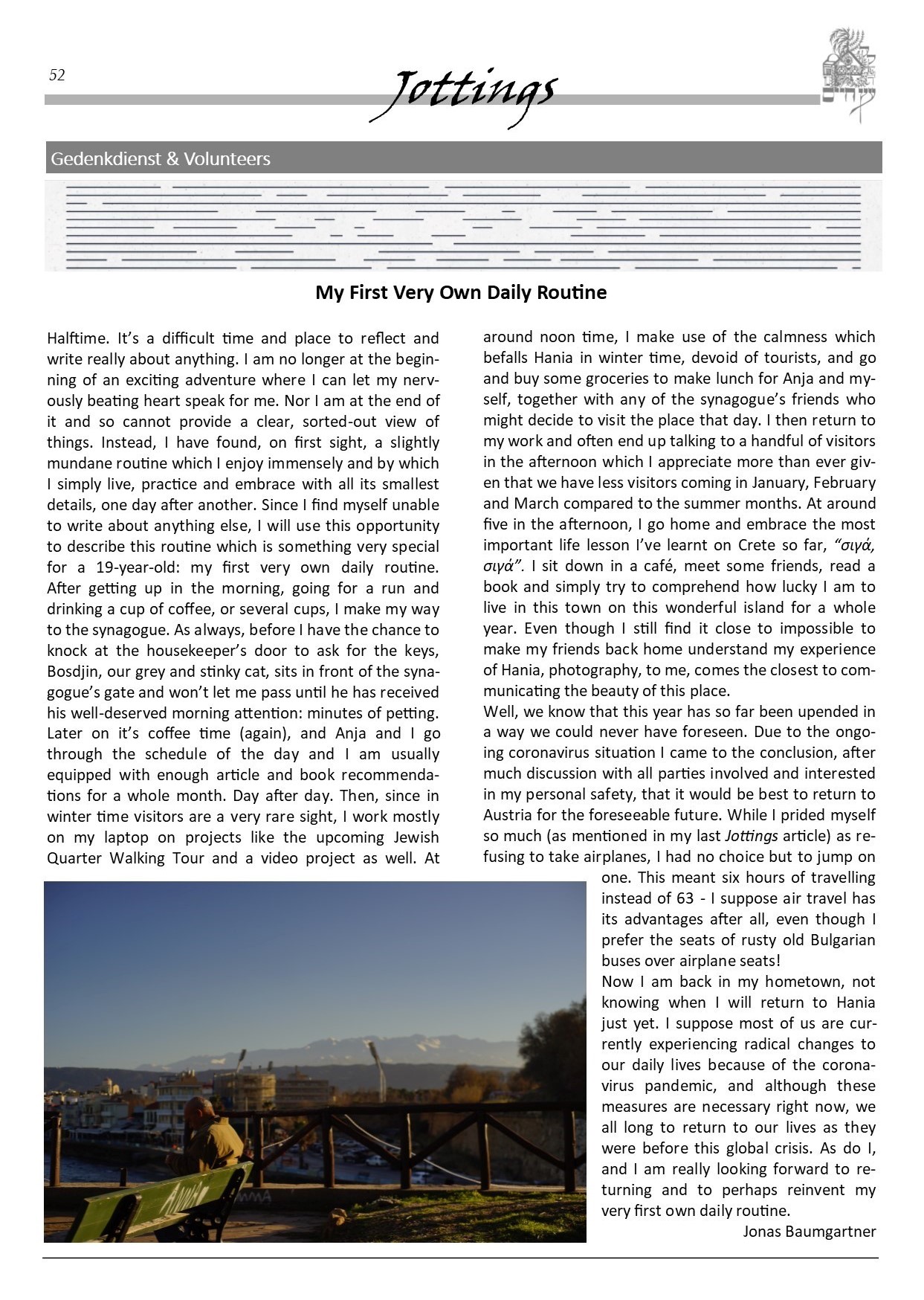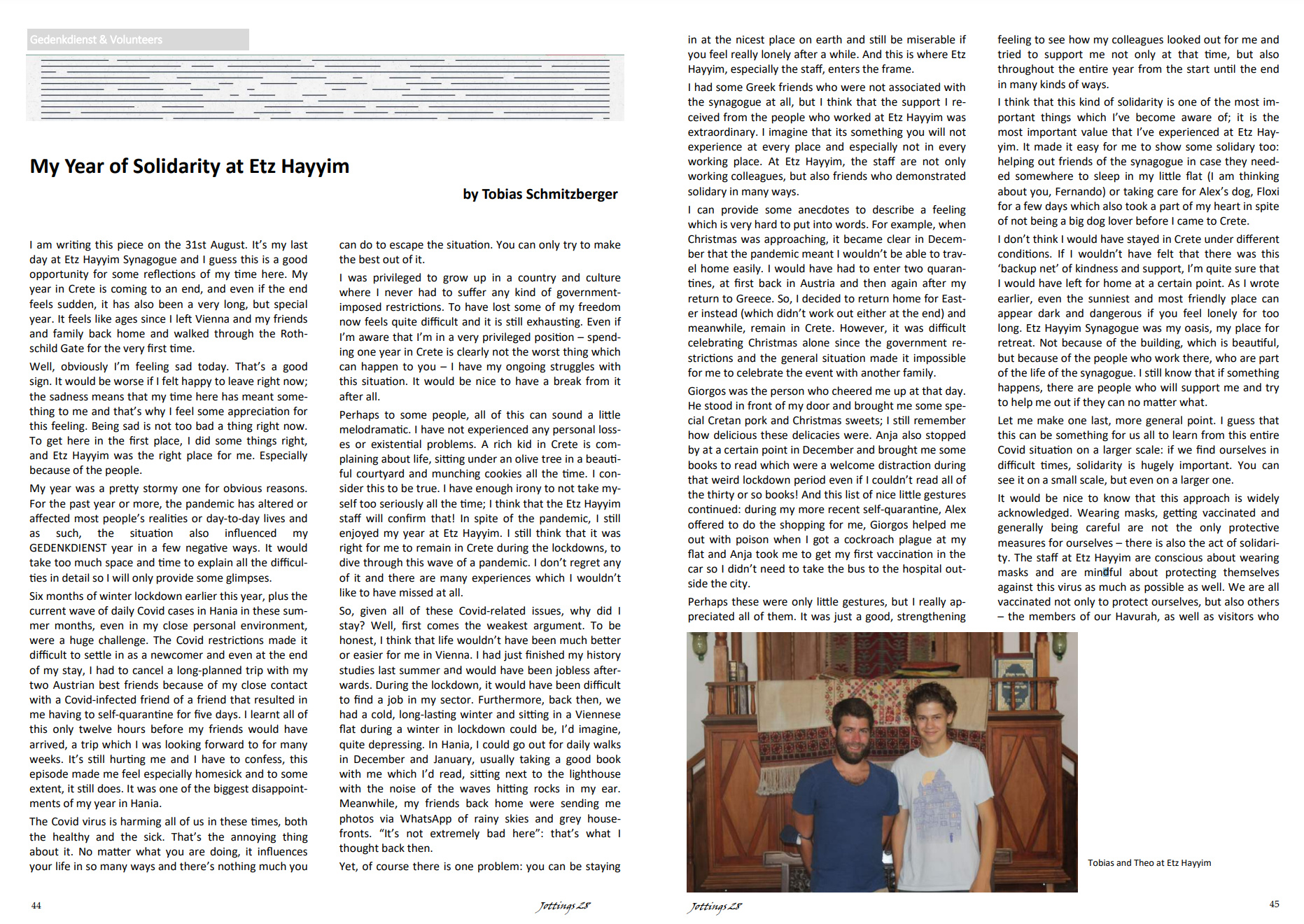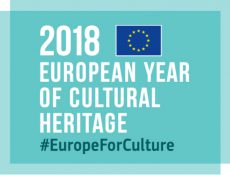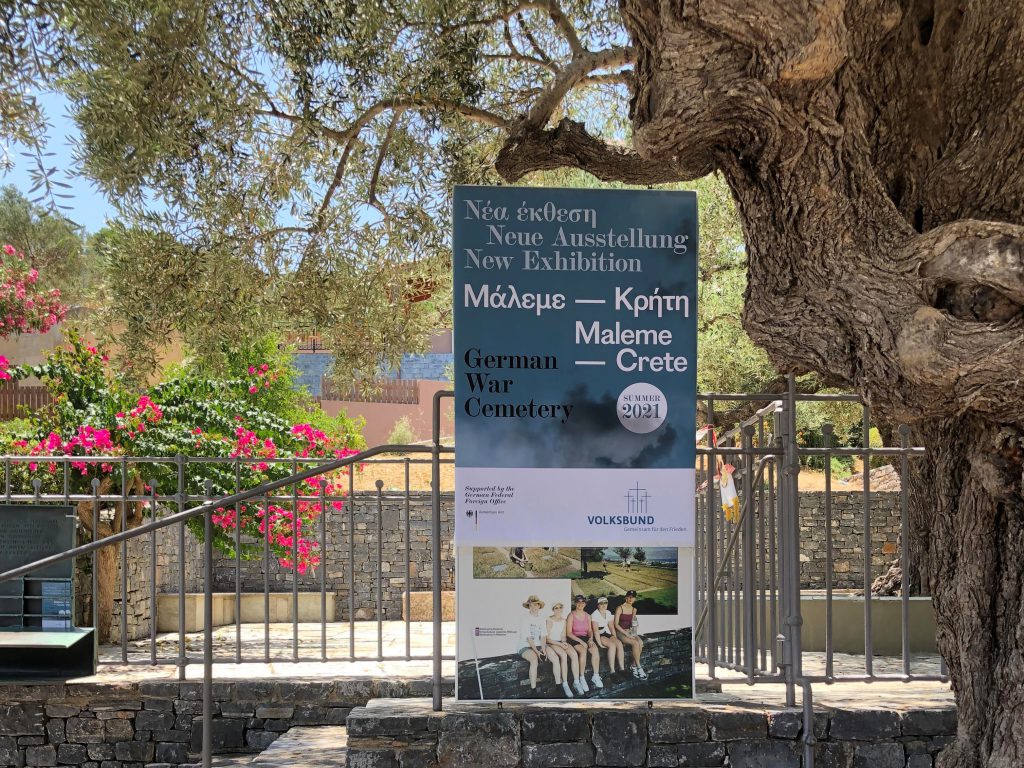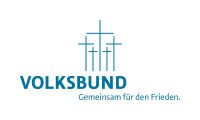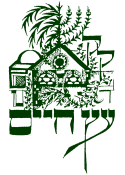GEDENKDIENST partnership
Every year since 2013, the staff at Etz Hayyim Synagogue is joined by a young Austrian volunteer from the Austrian non-profit organisation, GEDENKDIENST (Holocaust Memorial Service). The organisation carries out critical educational work on Austria’s historical responsibility and sends young Austrian volunteers for a period of 12 months to 20 different locations worldwide, including historical and memorial sites, museums, and research and educational institutions that deal with the remembrance and awareness of crimes committed by the “Third Reich.” These institutions include the US Holocaust Memorial Museum in Washington, D.C., the Anne Frank Stichting in Amsterdam and Yad Vashem in Jerusalem. The tasks of the volunteers range from supporting or being a part of projects that undertake research into the Holocaust, commemorating the victims of Nazism and taking care of the survivors in retirement homes as a voluntary social service or an alternative to compulsory military service.
.
Etz Hayyim’s cooperation with GEDENKDIENST began with a visit of a group of students from Vienna University in June 2012 during their study trip on the topic, “Occupation and Resistance in Greece” headed by Dr Hans Safrian. Among the students were the then-Chair and Vice-Chairs of GEDENKDIENST who approached Etz Hayyim with the idea of designating the synagogue as one of the locations to which GEDENKDIENST sends their volunteers.
.
The association was founded in 1992 from an initiative by an Austrian political scientist who, since the late 1970s, had campaigned for the establishment of an alternative to military service in Austria which would include and foster Holocaust awareness education. At the start, the initiative focused on establishing a programme of volunteer services at the museum and memorial site, Auschwitz-Birkenau. In 1980, the then Austrian Federal President stated that “an Austrian has nothing to atone for at Auschwitz.” In 1995 however, he acknowledged the “positive achievements” of GEDENKDIENST which had been formally established in 1991.
.
At Etz Hayyim, each GEDENKDIENST volunteer (the Gedenkdiener) has become an integral and valued member of our staff. As a not-for-profit organisation, the synagogue relies on volunteer work and donations and we therefore feel privileged to receive the dedicated support of a young, creative-minded volunteer every year. Our partnership with GEDENKDIENST benefits the daily operations of the synagogue and our educational and cultural initiatives and projects which would not be possible without the GEDENKDIENST volunteers.
.
A year at Etz Hayyim provides a unique experience for each Gedenkdiener to learn about many aspects of Jewish and Cretan history and culture, to participate in community events and holidays and to meet people from all over the world. The young volunteers are also key staff members who contribute decisively to the work undertaken at Etz Hayyim: the Gedenkdiener supports the staff in giving guided tours to visitors, contributes to research and publications, and helps to prepare community events and exhibitions on specific temporary projects. In 2015, for instance, the Gedenkdiener organised the presentation of the photography exhibition, “Intercultural Encounters” at Etz Hayyim in cooperation with the Austrian Embassy in Athens. Furthermore, an exhibition about the reconstruction of the synagogue was prepared with the help of our volunteer in 2016. Visitors have repeatedly expressed their admiration for the work carried out by the individual Gedenkdienleistenden and have commended the GEDENKDIENST initiative as an important contribution to preserving the memory of the victims of the Second World War and an acknowledgement of Austria’s historical responsibility. All Gedenkdienstleistende describe their impressions and experiences during their tenure in our Jottings newsletter under the section, “Gedenkdienst at Etz Hayyim”.
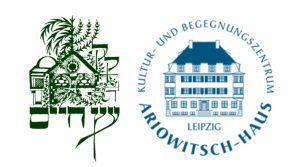 An artistic cooperation, exchange and education project addresses the extermination of the Jewish community of Crete during the Second World War.
An artistic cooperation, exchange and education project addresses the extermination of the Jewish community of Crete during the Second World War.

